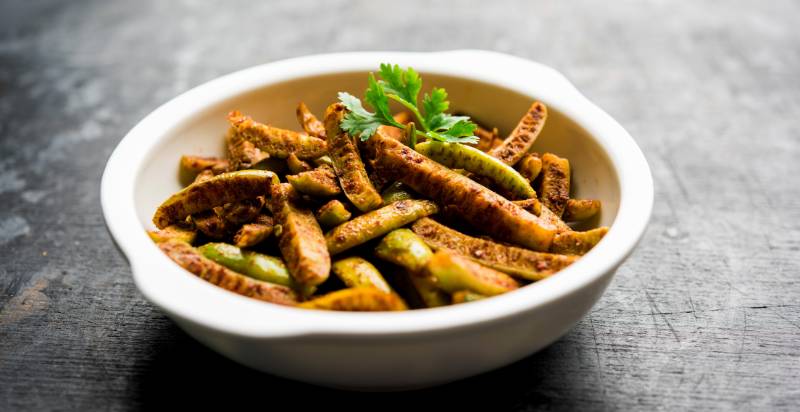Tindora, also known as Ivy Gourd, is an edible vegetable that grows in tropical and subtropical regions of India. The plant is native to South Asia but has become popular worldwide due to its numerous health benefits. Tindora is a small, green-colored gourd shaped like a cucumber. Its skin has light bristles, and the inner pulp is edible when cooked.
The vegetable can be cooked in many ways, such as stir-frying, steaming, boiling, or baking. Here’s everything you need to know about tindora, including its nutrition and health benefits.
What is Tindora?
Tindora is a small, green-colored gourd that grows on vines in tropical and subtropical regions of India. The plant is native to South Asia and has been a food source for centuries. It is also known as “Ivy Gourd” in English due to its resemblance to ivy leaves. The vegetable tastes slightly bitter and can be eaten raw or cooked in many different ways.

History and Origin of the Tindora
The origin of the tindora is not known for certain, but it is believed to have originated in India and has been used as a food source for centuries. Historically, the plant was consumed by poorer communities who could not afford other vegetables. Today, tindora is widely cultivated in tropical and subtropical regions of India and other parts of Asia and Africa.
Nutritional Value of Tindora
Tindora is a low-calorie vegetable with many essential nutrients. It contains vitamins A, C, K, and B6, folate, manganese, and dietary fiber. The vegetable is also rich in minerals such as iron, magnesium, and calcium.
Health Benefits of Tindora
Tindora has many potential health benefits due to its high nutrient content. The vegetable is believed to help boost the immune system, reduce inflammation, regulate cholesterol levels, improve digestion, and promote healthy skin. Furthermore, it may also aid in weight loss due to its low-calorie content.
Where is Tindora Grown and Harvested?
Tindora is widely cultivated in tropical and subtropical regions of India and other parts of Asia and Africa. The vegetable is harvested when green and can be found in most regional markets.
Flavor Profile of the Tindora
Tindora has a slightly bitter taste and can be eaten raw or cooked in many ways. It pairs well with cumin, coriander, turmeric, and mustard seeds. The vegetable also goes well with yogurt-based sauces and Indian curries.
How to Store Tindora?
Tindora should be stored in a cool, dry place for up to two weeks. For longer storage, it can be frozen or canned.
Where to find the Best Quality Tindora?
The best quality tindora can be found in specialty markets or online. Look for firm and green-colored vegetables with no signs of spoilage.
How to Use Tindora in Recipes?
Tindora pairs well with other vegetables such as potatoes, bell peppers, and carrots. It can also be used to add flavor to dishes when combined with other fruits such as pineapple, mangoes, or bananas.
One of the most popular ways to prepare tindora is by frying it in oil until it becomes crispy and golden brown. This method not only gives a hint of crunch but also brings out the unique flavor of this vegetable. To make a delicious tindora fry, simply combine some cooking oil, garlic, ginger, chili powder and cumin in a pan. Once the oil is hot enough, add the tindora and cook until golden brown.

Tindora can also be used in curries to add flavor and texture to the dish. It pairs well with curry spices such as cumin, coriander, and turmeric. To make a flavorful tindora curry, simply sauté some onions in oil until soft and then add garlic, ginger and spices. Once the spices are fragrant, add the tindora slices with some tomatoes, coconut milk or water. Cook until the vegetables are tender and your curry is ready to be served.
- Everything You Wanted to Know About Red Tamarillos - June 2, 2025
- A Guide to Tulips: Everything You Need to Know & More… - June 2, 2025
- Guanabana: Description, Flavor, Benefits, And Uses - May 27, 2025

1 thought on “Tindora: Description, Flavor, Benefits, And Uses”
Comments are closed.